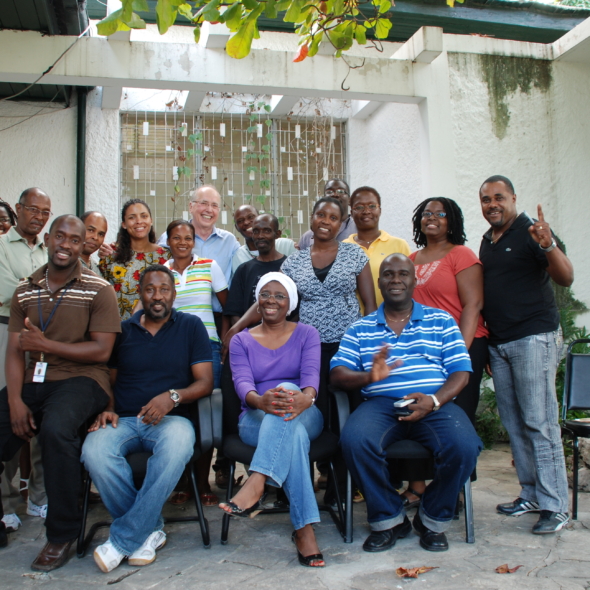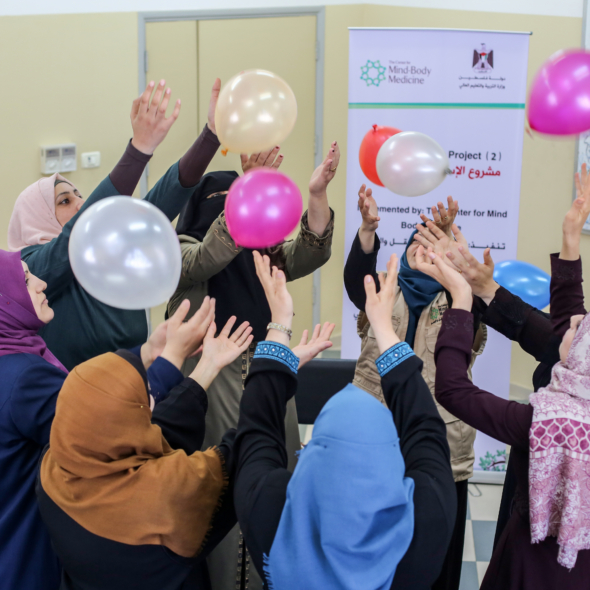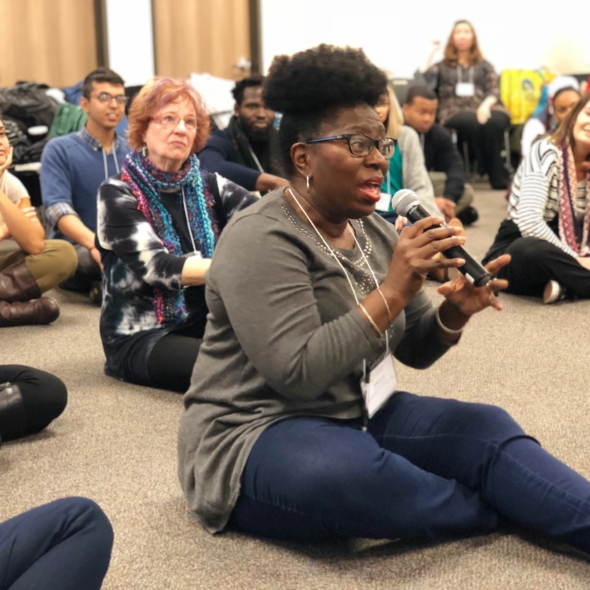Grace is small, slight, and dark and moves almost without sound at the side of her two blond sons. But once she registers, like a negative coming alive in a tray of developer, her image stays with me, still, mournful and isolated among a crowd of a hundred adults and children who have come, curious, clamoring and needy, for Wellness Day at the Grand Isle Community Center.
Grand Isle sits at the end of a forty mile long sliver of Louisiana coast that pokes into the Gulf of Mexico. It is regularly throttled by hurricanes and, more recently, invaded by the BP oil spill of April, 2010. I’m there with a team from our sister organization the Mind-Body Center of Louisiana, physicians and psychotherapists whom the Washington DC based Center for Mind-Body Medicine has trained. Beginning just after Katrina in 2006 we’ve taught them, as we have clinicians and community leaders around the world, to teach self care – meditation and guided imagery, drawings and dance – and to lead small supportive groups in which kids and adults can learn to use these and other tools to quiet their anxiety, gain perspective on seemingly intractable problems, and feel the connection to others who are also struggling to mend their lives.
For many, particularly on Louisiana’s Gulf Coast, the oil spill was the insupportable last straw: “The hurricanes, Katrina and Gustav, scared us and took our money and some of our homes,” Judy a fit, gravel voiced 51 year old house painter who has already been in one of our eight week long mind-body groups, tells me as we take a break on the porch of the Community Center. “But this BP thing doesn’t go away. Of course, it’s in our bodies” – in an authoritative survey a year ago 48% of all Louisiana Gulf Coast residents reported “an abnormal increase of at least one health symptom”. Judy has “headaches and these rashes,” pointing to her red blotched legs, “I never had before, and my grand kids are wheezing and have sinus problems. My friend, a healthy, clean-living Christian lady younger than me has already passed from a pneumonia that never went away.
“But it’s even worse for our minds and souls.” The beach and the Gulf which were “always my solace” are now “torture” to Judy who the other day, long after residents have been told that the waters are safe, counted “forty-eight dead animals washed up, fish of all sizes and big old sea turtles, with their intestines hanging out. We know,” she concludes sadly, “it’s our mother the Earth that’s been hurt.”
Employable and feisty, equipped with skills for self-care, Judy is poised to make a new life elsewhere with her daughter and grandchildren. Grace and her family, like dozens of others whom we have met on the Gulf, and inland too, feel trapped as well as endangered. You can see it in her eyes, scampering across my face, back and forth over her six and nine year old boys, and around the room, vigilant, it seems to me, for threats. The white plastic bracelet she still chooses to keep on her wrist, emblem, she tells me, of a recent, long and scary medical work-up, reminds me of the metal ones that indicted felons under house arrest may be forced to wear on their ankles.
Except Grace and her family no longer have a house or even a rented room. Her husband Ty, who sits stolidly nearby, worked on the rigs for BP and then, like 52,000 other Gulf coast residents, on the clean-up crew He is now, he says, seeming a bit dazed, “on call,” to BP, a kind of economic and social limbo in which he has no work or pay and cannot collect unemployment.
Grace has been told that the numbness in her face, the headaches and the weakness in her limbs signal the onset of multiple sclerosis and that medicine has little to offer. When I say that many others have developed similar symptoms since the oil spill, that they, like the rashes, respiratory and digestive problems, depression, confusion, and anxiety have been noted in medical journals as toxic side-effects of the oil and the dispersants, not of MS, she seems unconvinced. The diagnosis has been made, the sentence already passed.
In the morning I teach slow deep breathing to quiet anxiety. We do shaking and dancing to release tension and raise spirits and over lunch I give a talk on foods that help the liver detoxify the chemicals from the spill and the clean-up. At the end of the day we all – children and adults – do three drawings: “ourselves as we are now,” ” how we would like to be” and “how we are going to get there.”
Chad, Grace’s six year old, jumpy and aggressive at the beginning of the day, now concentrates on crayoning himself in a new house, a little boy on his feet, holding a tiny replica of that house, symbol of his hope, in his hand. In her first drawing Grace is surrounded by all four of her children – faces without bodies, mouths turned down, big tears on her cheeks. In the second drawing all five faces are inside a house, smiling. And in the third picture, the one of how she is going to get from the situation she is in to the one she hopes for, Grace, a figure with a body now, is kneeling, praying.


